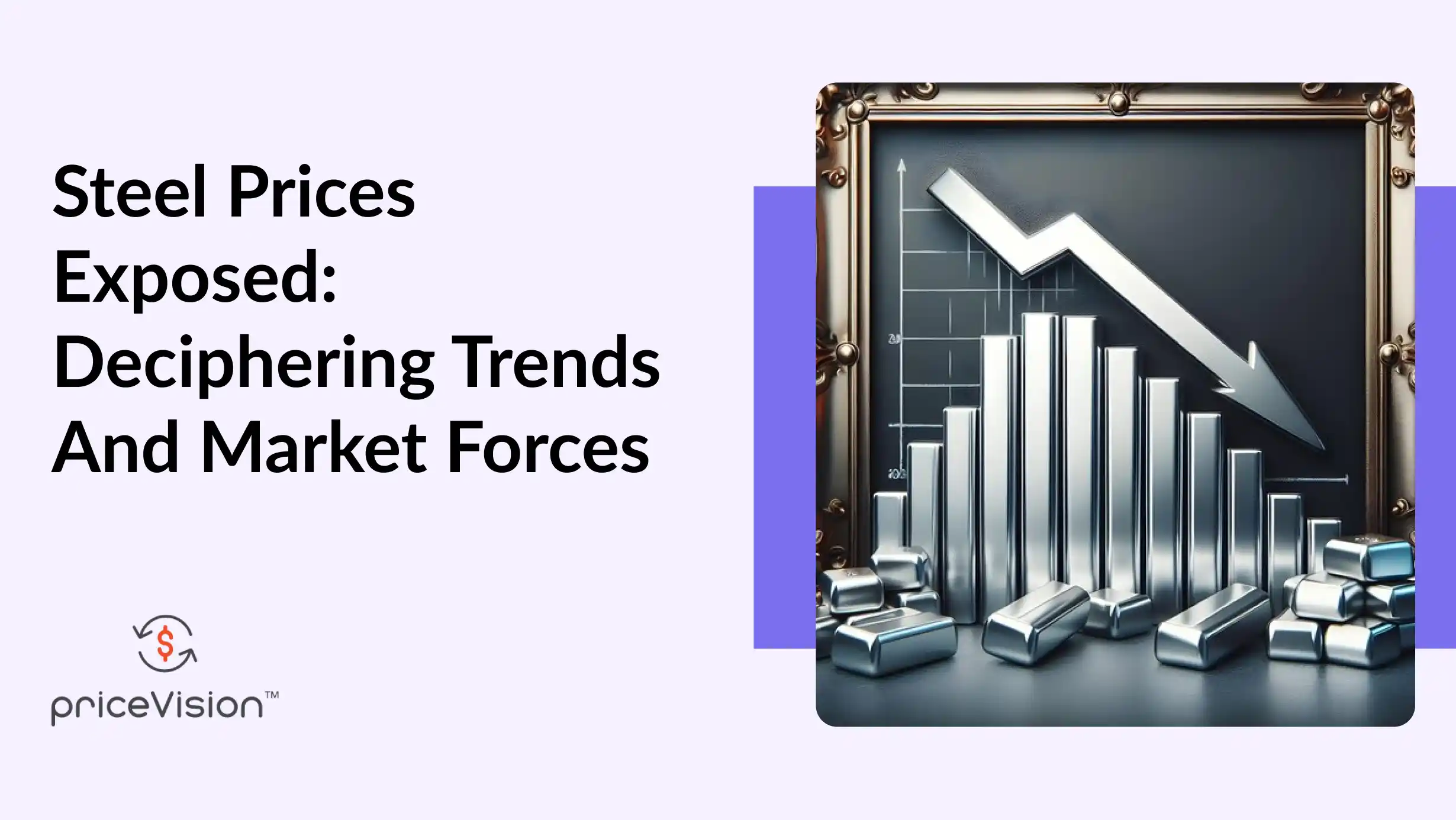Steel Prices Exposed: Deciphering Trends and Market Forces

Introduction
Steel holds immense significance as a resource. It is a material that plays a role in various industries propelling progress and innovation worldwide. Its unparalleled strength, flexibility, and adaptability have been pivotal in the advancement of humanity. It finds applications across sectors and has contributed significantly to the growth of numerous companies.
Brief overview of the steel industry
As we've previously mentioned the steel industry plays a role in the world economy impacting it significantly like how gold does in instances. It serves as a sector for engineering purposes providing materials, like steel.
The steel industry encompasses stages starting from mining iron ore and other raw materials to the processes involved in steelmaking, like blast furnaces and electric arc furnace methods. It also includes refining, shaping, and distributing steel products. Steel is widely used in industries such as construction, automotive, machinery, energy, and transportation due to its strength, versatility, and recyclability.
The continuous progress in technology, sustainability, and efficiency, within the steel industry significantly contributes to growth. Shapes the infrastructure of our modern civilization.
Importance of monitoring steel prices
It is crucial for investors to closely monitor steel prices since they have an impact on the profitability and competitiveness of multiple subsidiary businesses. Steel prices can fluctuate due to factors like demand and supply dynamics, costs of raw materials, geopolitical events and economic trends.
By keeping a watch on these price movements industry players can make informed decisions, optimize procurement strategies, and effectively manage their inventory. Being aware of market trends enables companies to swiftly respond to changes in steel prices reducing risks and maximizing revenue.
Moreover, monitoring steel prices helps businesses navigate market conditions while maintaining profit margins and remaining adaptable in an ever-evolving industry landscape.
Factors Influencing Steel Prices in June 2023
Global Economic Conditions
1. Impact of post-pandemic recovery
In the year 2023, the prices of steel are being greatly influenced by the recovery after the pandemic and the overall global economic situation. The inflated demand for construction and manufacturing raw materials along with disruptions in supply chains is impacting the prices of steel.

Additionally, geopolitical tensions and trade policies are adding to market uncertainties highlighting the significance of keeping a watch on these factors when making decisions in the steel industry.
2. Inflationary pressures and their effects on steel prices
The impact of inflation on steel prices cannot be overlooked. When inflation rises it affects factors contributing to production costs, such as energy, labor, and raw materials. Consequently, steel prices tend to increase as a result.
Moreover, inflation also affects the purchasing power of both consumers and businesses which in turn influences the demand and supply dynamics in the steel market. Given the trends of inflation, it becomes crucial for industry stakeholders to closely monitor its effects on steel prices. This allows them to develop strategies and maintain profitability within a challenging economic environment.
Supply and Demand Dynamics
1. Analysis of steel production and consumption trends
In the years there have been significant developments in the steel industry regarding production and usage patterns. The rise in urbanization and infrastructure development in emerging economies has led to an increase in steel production. This growth can be attributed to advancements in technology and efficiency improvements that have boosted output levels.
On the demand side sectors like construction, automotive and manufacturing continue to drive the need for steel. Moreover, there is a growing focus on practices and the use of recycled steel within the industry highlighting a commitment to responsibility. It is crucial for stakeholders to closely monitor these production and consumption trends to make informed decisions and take advantage of the changing dynamics within the steel market.
2. Government policies and their influence on supply chains
Government policies play a role in shaping the steel supply chain. The regulations on trade tariffs and import/export have an impact on how steel flows across borders affecting the balance of supply and demand. For instance, when one country imposes tariffs on steel imports it can lead to reduced imports and an increase in production in another country causing changes in the supply chain.
Environmental regulations also have an influence on steel production practices by encouraging the use of eco-technologies and sustainable sourcing of raw materials. Additionally, policies related to infrastructure investments can boost the demand for steel, stimulating the industry and influencing distribution patterns within the supply chain. It is crucial for industry stakeholders to closely monitor and adapt to these government policies to effectively navigate through the changing landscape of steel supply chains.
Raw Material Costs
Understanding the price dynamics of elements, like iron ore and coal is crucial when it comes to comprehending the fluctuations in steel prices. Since these materials are vital for steel production any changes in their prices directly impact the manufacturing costs involved. For example, in 2021 China imposed restrictions on importing coal from Australia, which caused a surge in coal prices and subsequently affected the costs of producing steel.

Similarly disruptions in the supply of iron ore from exporters such as Brazil led to fluctuations in prices during 2020 impacting steel prices globally. Consequently, it becomes imperative for industry stakeholders to closely monitor and analyze the costs associated with these inputs to effectively predict and manage price volatility within the steel market.
Steel Price Trends in June 2023
Overview of steel price movements during the month
As against concerns of lower demand, the steel prices in the month of June set a high record for this year. Unfortunately, dryness in the Sichuan region, the area most critical for steel prices, caused the critical hydropower levels to dive and drive the authorities to reduce levels and shut down steel factories until August, driving the prices up.
Lastly, China’s GDP growth was slow in the second quarter of the year which has deepened concerns about the low demand for steel by the world’s largest consumer of the commodity.
Comparison with previous months and year-on-year trends
Steel prices essentially collapsed in May due to the Russian invasion of Ukraine causing prices to rise by $500 per ton in Europe and the United States. It is expected that another downfall of $200-250 will be seen soon. As compared to May, June was relatively much more stable than expected.
Steel prices have shown a considerable downward curve yet, they are still above their long-time average. Unfortunately, a steady decline is to be expected going forward, keeping in mind the decline in demand and low production as well due to the shortage of electricity in the Russian region.
Conclusion
In conclusion, steel prices are affected by a multitude of factors. This blog emphasizes the importance of keeping tabs on steel prices as they impact business profitability and competitiveness.
Understanding the fluctuations in steel prices requires considering factors like conditions, post-pandemic recovery, inflationary pressures, and supply and demand dynamics. Government policies, especially trade tariffs and environmental regulations also play a role in shaping steel supply chains.
Furthermore, the costs of inputs such as iron ore and coal directly impact steel prices. Overall, June 2023 was an average month for steel as a huge producer shut down operations, and demand for the commodity is at a low, prospects for steel prices will be interesting to see.